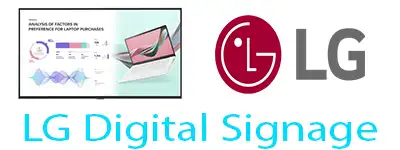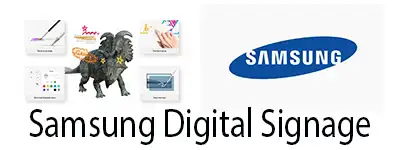Increasing Revenue and Efficiency: The Benefits of Digital Menu Boards

In the current fast-paced online world, businesses are constantly seeking creative ways to enhance client engagement and optimize operations. A such development is the integration of digital menu boards, a potent tool that combines visual appeal with practicality. These electronic signage displays revolutionize the manner restaurants and shopping establishments present their products, enabling for fluid content that captures the attention of clients and enhances their total satisfaction.

Digital menu boards offer numerous advantages beyond just visual appeal. By utilizing state-of-the-art tech, businesses can readily update their menus in real-time, advertise exclusive deals, and display appealing images of their goods. This not only boosts sales but also enhances productivity by cutting down the effort spent on managing physical lists and outdated promotional materials. As we explore deeper into the advantages of these electronic signage options, it's clear that putting resources in intelligent electronic signage can transform any establishment into a contemporary and interactive environment.

Comprehending Virtual Menu Displays
Electronic menu boards are current, versatile screens that substitute static menu displays in multiple establishments, in particular in the culinary sector. These boards leverage digital signage innovation to present offerings dynamically, facilitating instant changes and enhancements. Businesses can exhibit their services attractively, attracting clients and boosting sales.
One major benefit of virtual signs comes from the potential to readily adjust information. This flexibility allows for restaurants to quickly change costs, promote deals, or highlight new menu items sans the need for costly reproductions. Additionally, utilizing electronic display solutions can boost customer involvement by incorporating colorful images, animations, and as well as videos to showcase menu items, luring customers to buy.
Additionally, virtual displays can improve operations by showing caloric data, allergy information, and variations for various dietary requirements. This enhances customer satisfaction while also enables staff interact more efficiently with patrons. For companies looking to adopt up-to-date displays, choices like Samsung digital signage and LG digital boards provide high-quality displays designed to improve the overall eating experience.
Benefits of Electronic Displays in Retail
Digital signage in store environments revolutionizes the shopping experience by providing engaging and interactive content. These electronic displays can display sales offers, product descriptions, and high-quality images that capture the focus of customers, leading to impulse purchases. The ability to alter content in real-time enables retailers to rapidly respond to changing trends, minimize waste, and refine merchandising approaches effectively.
Another significant advantage of electronic displays is its capability to enhance customer engagement. Interactive digital signage invites customers to interact with the displays, learn additional details on products, and explore promotions through touchscreens or smartphone connectivity. This not just boosts the time customers spend in-store and also improves their overall shopping satisfaction by offering relevant information at their fingertips, leading to greater customer satisfaction.
Moreover, digital signage allows retailers to analyze customer behavior and optimize their sales approaches. With the right digital signage solutions integrated with analytics tools, businesses can gain knowledge into customer likes and visitation trends. This data empowers retailers to fine-tune their marketing efforts, strategically place promotional content, and in the end drive sales while improving operational efficiency.
Implementing Digital Displays Systems
In the process of evaluating the integration of digital signage systems, it’s important to understand the particular requirements of your company. Diverse environments, such as restaurants or retail spaces, require specialized approaches. For example, a food establishment might focus on digital menu boards that highlight menu updates, while a retail store may choose interactive displays that feature popular items. Comprehending your target market and the objectives of your electronic signage will influence your choices.
After you have recognized your needs, choosing the appropriate hardware is crucial. Choices like Samsung digital signage, LG commercial signage, and NEC electronic messaging feature a selection of screen sizes and capabilities that can enhance your communications. Determine whether you should consider outdoor displays to draw foot traffic or indoor displays that deliver immersive customer encounters. The decision of a content delivery device, such as the brightsign digital signage player, also plays a significant function in ensuring effective content distribution.
Finally, leveraging digital display software is critical to handling your information properly. Kickstart Computers will enable you to update menus and offers in real time, making sure that your signs continuously present up-to-date information. Web-based display solutions give adaptability and ease of use, enabling you to control multiple locations from a central platform. By carefully organizing the deployment of digital signage, businesses can significantly boost both client involvement and operational efficiency.
Deciding the Right Digital Signage Technologies
Choosing the right digital signage technologies is essential for maximizing the gains of digital menu boards. Consider the type of display that matches your setting—indoor or outdoor. Outdoor digital signage requires durable monitors that can endure weather conditions and intense brightness for readability in direct sunlight. Brands like LG offer commercial displays specially designed for outdoor settings, providing longevity and clarity.
A further important aspect is the digital signage software. A good digital signage CMS (Content Management System) will permit for easy content updates and scheduling, improving operational efficiency. Consider cloud-based digital signage solutions that grant flexible access, permitting you to manage content off-site. Dynamic digital signage can also improve customer engagement, making menu selections more accessible and informative.
Lastly, consider the integration with pre-existing systems such as POS or inventory management. A efficient digital signage system that works well with these systems will optimize operations and offer live data. For businesses in Australia, opting for a local provider can offer personalized support and enhanced service. Overall, comprehending your unique needs and existing technologies will ensure you select the optimal digital signage solutions for your digital menu boards.
